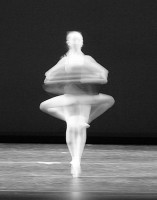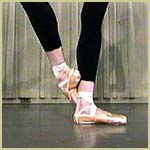If you press, the upper body and center of gravity (CoG) needs to move over the leg, and if you spring, the supporting leg meets your CoG in the middle. Which do you prefer? In this post Lauren Warnecke explores the benefits and mechanics of both to provoke thought and conversation.
Cecchetti
You Say Coupé, I Say Cou-de-pied
Cou de pied appears to be one of those steps that doesn’t line up with the whole “universal language of dance” idea. The Cecchetti Council’s printed syllabus calls this position “devant on the ankle,” but Ms. Gail Grant, calls it cou de pied. Many, many schools and teachers refer to it simply as “coupé” and do not differentiate between coupé the step and coupé the position.
Lightbulb Moments: Pas De Chat
Every jump in ballet is preceded by a counter-movement, namely, a plie, and this is exceedingly effective in getting more height out of a jump (try jumping from straight legs and see what happens), not to mention protecting the achilles tendon from injury. In fact, people have studied jump height and found that maximum vertical height in a jump is higher using a counter movement than not (3). So it makes sense that we bend our knees before jumping.
Confessions of a 28-year-old Grade I Grad: A Look At Cecchetti’s Method
Most dancers (especially American dancers) are trained in ambiguous combinations of techniques that generally come from whatever their teachers learned from their teachers. The fabulous thing about this program is that there is no ambiguity. There are answers for everything, no shades of gray, and very little room for interpretation. Since some of the greatest dancers in history passed through Cecchetti’s own hands, he was obviously doing something right.




